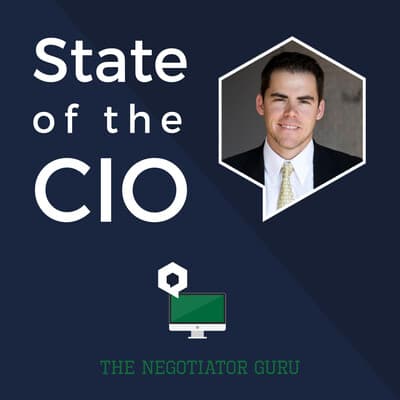Business
Tom’s trusted reputation as a leader in the industry has been achieved through a naturally influential and charismatic style coupled with the dedication to delivering a promised vision through the implementation of a robust business strategy. Identifying a strong need for digital transformation in the AEC industry, Tom joined Keross in 2020 to combine his talents and deep industry knowledge with Keross’ advanced digital capability. He is passionate about advocating for firms to gather and leverage their data effectively to derive such value as to provide a clear competitive advantage.We had a great conversation. Tom shares so much great information about consolidating data so that companies can act on the data and achieve their intended outcome. He also shares some key things leaders should be doing to implement a curiosity centered environment driven by data. Show Notes:[00:26] Tom Hasker is the CEO of Keross. He has over 24 years of management and development experience in multiple industries.[01:04] Tom shares why he chose the construction industry. [03:17] He has been with Keross for 4 months and is new to the technology industry. [04:05] Service-based industries tend to be slow on the technology curve. [04:35] The starting point is to look at the workflows that exist in your service offerings. Any serviced based outcome is delivered through some form of workflow. [04:54] The process of documenting these workflows helps you understand the elements of those workflows that can be delivered or enhanced through technology. [05:27] If you capture the organization’s delivery methodology and then you combine that with access to historic and real-time information now they can be brought together and the value you can drive is very exciting. [08:21] Organizations need to consolidate their data into a single system that allows them to act upon the data. [10:45] The next challenge is how we orchestrate the data that exists across this value chain. [12:06] In most buildings or infrastructure projects you can fall into the trap of also breaking the life cycle of that project into two granular pieces. [14:24] The philosophy behind orchestration is the automation of data-driven processes from end to end. It includes preparing data, making decisions based on that data, and then taking actions based on those decisions. [16:02] We are not able to get the most out of systems when they operate independently. [17:45] Technology is able to improve collaboration by providing a collaboration space where data can be collaborated on.[20:34] Start by standing back and looking at the process and consolidating all the information. Then look at the KPI’s the business is using and try to consider how that process can be automated. [20:47] More businesses should be working on real-time data. [21:37] Once you start this process you will look at things through a different lens and begin to notice opportunities for automation and orchestration all over the place. [23:41] Tom is watching how the big contractors and the big engineering firms are trying to come together and develop a new way of working. [25:26] The industry can really benefit from transparency and sharing of data and information. [26:42] Industries like construction and agriculture could learn from other manufacturing industries including the automotive industries. [28:52] Industry bodies have a big role in bringing the industries together and helping them to evolve and innovate in what they do. [30:08] Specializing too soon in one’s career can blinker one’s view of what is really important in an industry. [32:50] For me at the end of the day, it is about leaving no value on the table. Everybody is extracting all of the value that can be extracted out of the process and outcome.[33:18] If you are going into the technology space, it is critical that you understand the operations of the business. [33:58] Diverse perspectives are incredibly important across industries. [34:15] Take a business-first approach and understand the business process and intended outcome before you rush to understand the technical solution.[34:56] It is very important to create curiosity in your organization around how things can be improved and how things can be done better. Then you are going to create an environment of continual improvement. [36:09] Tom shares his best worst boss story. Links and Resources:State of the CIO Podcast WebsiteState of the CIO Podcast on Apple PodcastsDan on LinkedInTom on LinkedIn

